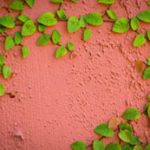 The many traditions found in Romania make this country unique and distinguished through a lot of cultural heritage. Find out more about the Romanian traditions
The many traditions found in Romania make this country unique and distinguished through a lot of cultural heritage. Find out more about the Romanian traditions
Tourists are generally fascinated with Romanian traditional dances such as “calusarii” or “hora” (circle dance). These dances combine elegant movements with dazzling rhythms. “Calusarii” represents rituals of initiation, whereas “hora” can be danced by all the members of the village community, especially on Sundays. Tourists who are unfamiliar with these types of traditions may be surprised, amused or frightened, curious or reserved. But after all, the true meaning of these dances is to render and recreate a faraway, ancient age.
On Christmas and New Year’s Eve, children and young folks go from house to house and sing beautiful carols. In some parts of Romania, they wear traditional masks and shout out loud certain traditional wishes. In return, they receive fruits and delicious pies. The most famous traditional carols are called Steaua (the Star), Plugusorul (Little Plough), Sorcova (some kind of New Year’s wish) and Capra (the Goat).
Boboteaza or Baptism Day, celebrated on the 6th of January and St. John’s Day, celebrated on the 7th of January, mark the first week of the year. Upon this time of celebration, Romanians go to church and bring home holy water for healing and spiritual purification. Also, in villages that are located on riversides, young people compete with one another for retrieving the cross thrown by priests into the freezing water of the river. Those who succeed are said to enjoy bountiful times in the near future. During this time of the year, waters are considered to be holy and because of that women do not do the laundry for the next eight days.
Martisorul (1st of March) is a holiday of hope, optimism and faith in a better future. The symbol of this holiday is a red and white string with an amulet (a coin or a pendant). Parents use to tie such adornments to their children’s hands or boys and men offer these pretty little things to ladies as a symbol of good luck and health.
Easter is the holiday which Romanians usually associate with the cracking of the red eggs according to the tradition on which this practice is based: after the Crucifixion, the Pharisees threw a banquet to celebrate their victory. One of them said to the others that when the rooster they were eating will come back to life and the boiled eggs shall turn red, only then will Jesus rise again. No sooner did he say these things, than the eggs turned red and the rooster came back to life. There is a special ritual for cracking red eggs on Easter Day. The older person says to the younger person: “Christ is Risen!” and the younger one replies: “Truly, He is Risen!” In the first day of Easter people usually dress up as a sign of body and soul rejuvenation and renewal. The Resurrection Feast is a special occasion for family reunions. People eat decorated eggs, bellows cheese, radishes and green salad, lamb roast and sweet cheese pie.
The traditional Romanian architecture is preserved especially in the rural areas, but also in plenty of ethnographic museums. Founded in 1936, the Village Museum in Bucharest is one of the most valuable such places in the world. The Transylvanian Ethnographic Museum in Cluj-Napoca, Astra Museum in Sibiu and many others, they have all kept the artistry born some centuries ago up to this day.
The traditional houses’ architecture, pottery and wood sculpture, icon painting on glass, the making of traditional folk masks, of musical instruments such as bagpipes, flutes, violins, the gorgeous embroideries, these are all true wonders created by skilled hands, following techniques inherited from past generations throughout the centuries. In many households the clothes, the carpets and the embroideries are still handmade up to these days. The carpets are highly appreciated due to their manufacturers’ excellent choice of colors and patterns, as well as to the quality of the fabrics.
Folk costumes combine sophisticated embroideries with vivid colors, in patterns that usually represent flowers and conventional animals in Valahia and Oltenia, or geometrical figures in Transylvania. Each region of the country has its very own kind of folk costumes. But in all the Romanian villages, women traditionally wear colorful shawls over their heads, whereas men wear woolen caps. In Maramures, these caps are very tall, borderless and adorned with various patterns. They are known as “clop.”











RSS